Frederick Beesley is best known as the inventor of the spring-cocking self-opener that made Purdey’s reputation as a builder of the finest hammerless guns of the twentieth century.
Patent No.31 of 1880 may be his most successful idea but Beesley was a prolific inventor, who contributed to the development of the over-centre type ejector mechanisms that are generally known today as ‘Southgate ejectors’, as well as numerous other designs that saw use in the gun trade during the late nineteenth and early twentieth centuries.
The gun illustrated here is the body-action version of his Patent No.425 of 1884. It appears in two styles, the ‘wrist-breaker’ with elongated ‘leg-of-mutton’ lock-plates and this box-lock type iteration of the concept. Both were named and sold by another London gunmaker, Charles Lancaster.
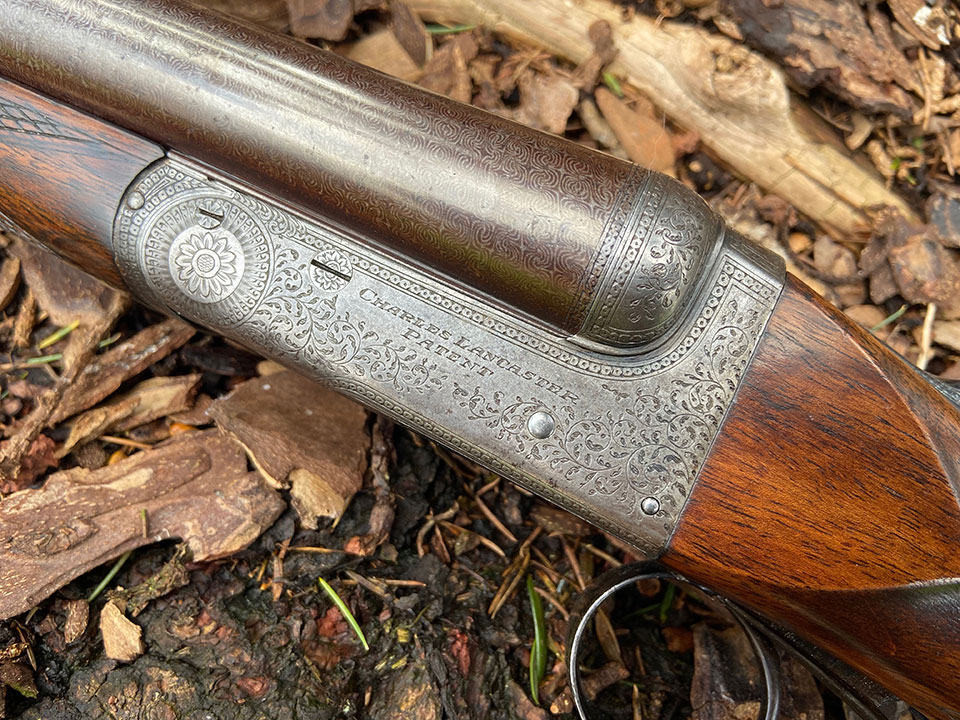
At the time, Charles Lancaster was owned by Mr. Henry A.A. Thorn, who was a canny businessman, author of ‘The Art of Shooting’ and the man who drove the continued success of the firm (founded in 1826) into the hammerless era.
Thorn had apprenticed to Charles Lancaster’s son, Charles William Lancaster, in about 1870. Upon Lancaster’s death, in 1878, Thorn bought the company from his widow, taking charge in 1879 and forming ‘Charles Lancaster & Company’.
Beesley’s patent No.425 appears to have been used by Lancaster under some agreement, though there is no documentary proof of this, as far as I am aware. He was certainly advertising ‘wrist-breakers- in 1890, when the patent protection was still in force.
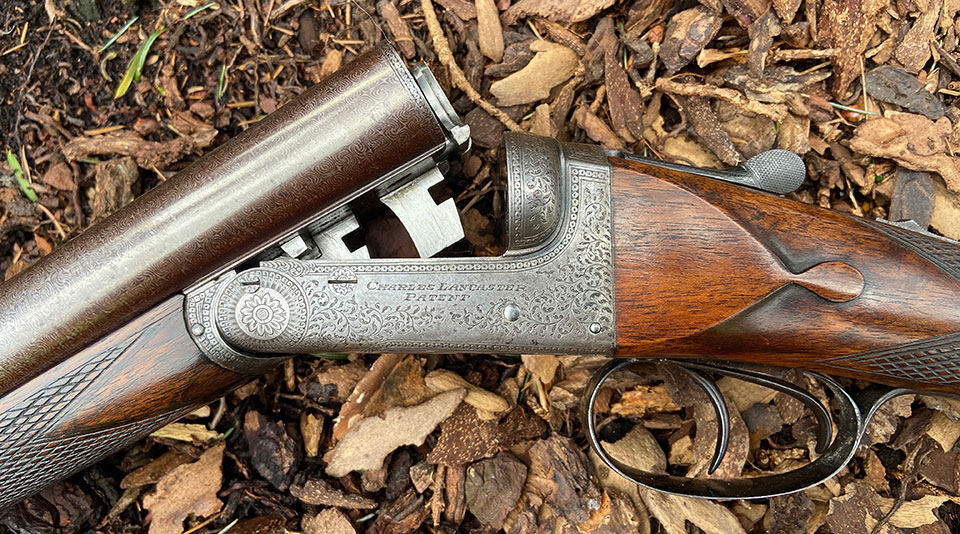
The gun pictured here; No.14584 suggests, from the serial number, a date of 1930, though the Damascus barrels bear 1904 proof marks, which were used until 1925, so it was proof tested before 1925, in London. The barrels bear Charles Lancaster’s ‘CL’ barrel maker’s mark. In those days, a patent was protected for seventeen years, if the relevant fees were paid. So, Beesley’s patent protection for No.425 would have expired in 1901.
It is likely that Beesley made these gun for Lancaster while the patent protection remained in force but afterwards the body action version may well have been made by others, in lower quality grades, often given a ‘0’ prefix to the serial number and noted in Lancaster’s order books as ‘0’ or ’00’ quality guns.
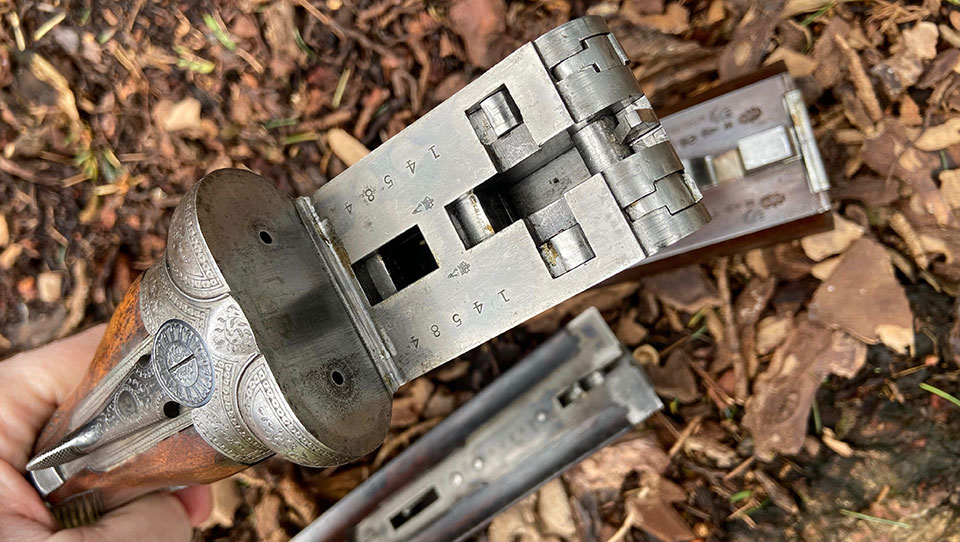
The price differential was significant, with a best hammerless side-lock costing £60.00 in the 1893 price list and a body-action ‘0’ quality hammerless ejector costing £45.00. Lancaster always referred to ‘body-action’ rather than ‘boxlock’ guns.
I have owned several of these Beesley-patent Lancaster’s. They are well made, cleverly conceived and they handle and function well. It is perhaps telling that almost all the examples I have encountered have been well used and almost worn-out, suggesting they served well and without mishap for decades, despite the ‘complicated’ mechanism, which uses the long mainspring to cock the hammer and force the barrels off the flats and self-open’ the gun.
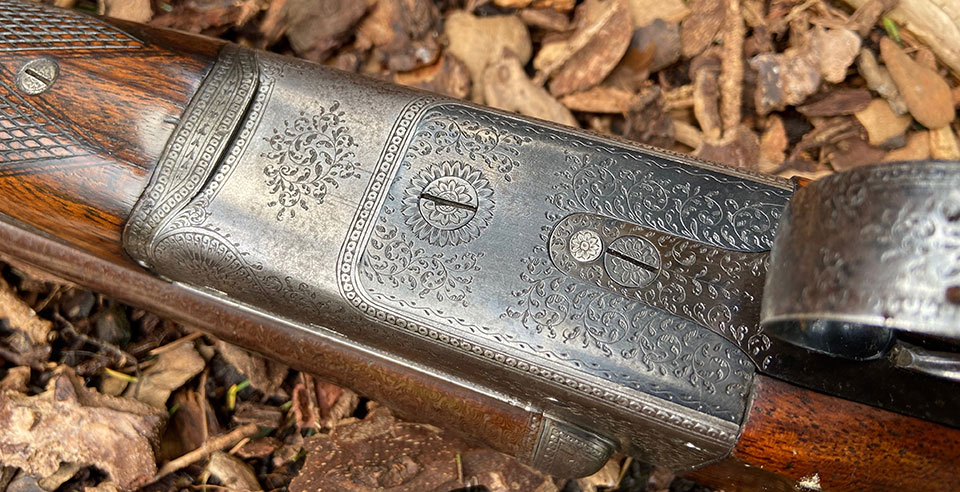
To see how the self-opening is activated, look at the action flats. There you can see two cocking cams. The barrel flats have lateral limbs transversing the front lump. This bears down on the cocking cams and depresses them when the gun is closed.
These cams come into contact with the long main-spring, flexing it and providing extra tension. When the top-lever is activated and the Purdey bolt released from its bites, this spring tension forces the barrels off the flats.
While the gun does jump open nicely, there is nothing stiff or difficult about closing it, although the mainspring cocks the hammer on closing.
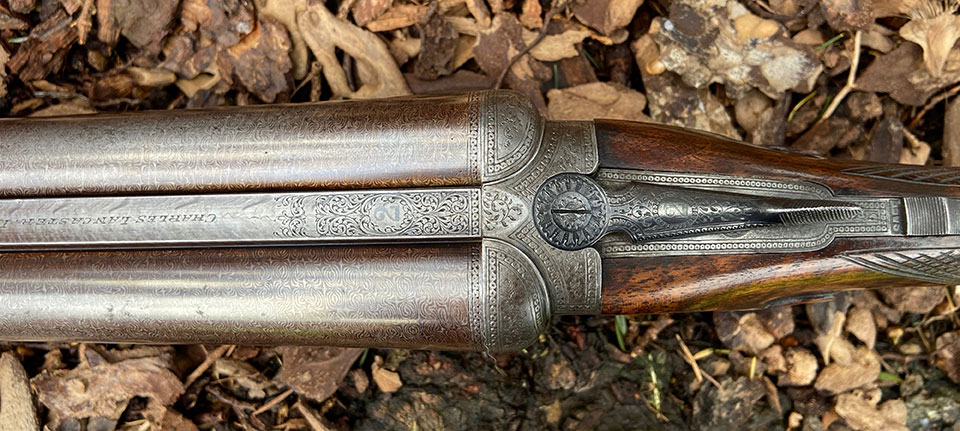
The gun has a type of open foliate scroll engraving that Lancaster used widely, with neat detailing around the pins. It extends onto the rib, which also notes ‘2’ as the gun is the second of a pair. The name on the rib says only ‘Charles Lancaster, London’ and the action body claims ‘Charles Lancaster Patent’, though we know it was actually Beesley’s patent.
This wording is why we suspect a deal was done with Beesley to make the guns so they could be marketed this way. Beesley was not averse to selling the credit for his inventions. ‘Purdey’s Patent’ is engraved on the bar of Purdey guns of the period, after Purdey had bought the rights from Beesley to that design.
The practice does not seem uncommon in any case. ‘Stephen Grant’s Patent’ is engraved on many E.C. Hodges patent hammer guns sold by Grant, for example.
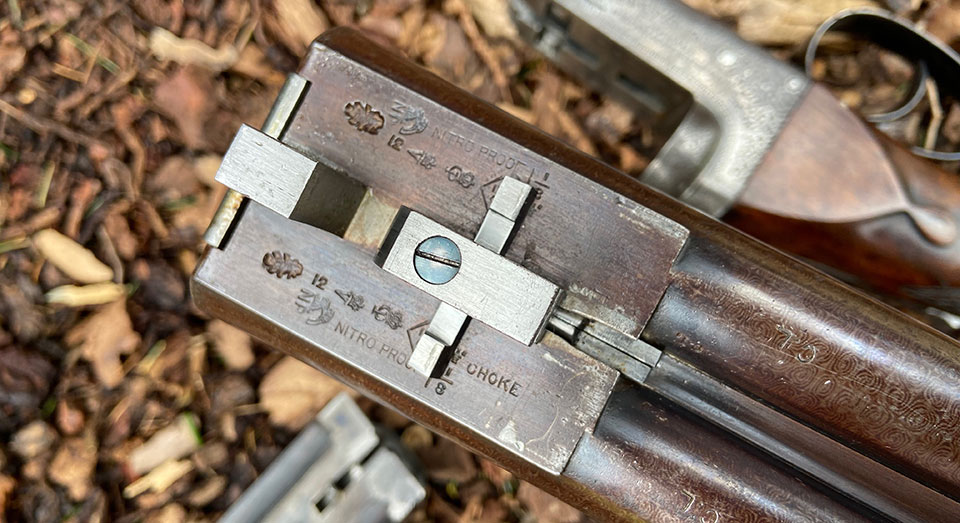
The stock and forend on No.14584 are of quite plain, straight-grain walnut and the chequer is of coarse diamonds, suggesting the owner was planning to use the gun in the wet and valued strength over beauty. The wood-to-metal fit remains very tight and wood appears not to have been much worn, nor ever re-finished.
As a rather sophisticated alternative to an Anson & Deeley action gun, with a London pedigree and a direct link to perhaps the cleverest Englishman ever to design a gun, the modest sums these Lancaster’s make in today’s market make them very good value.
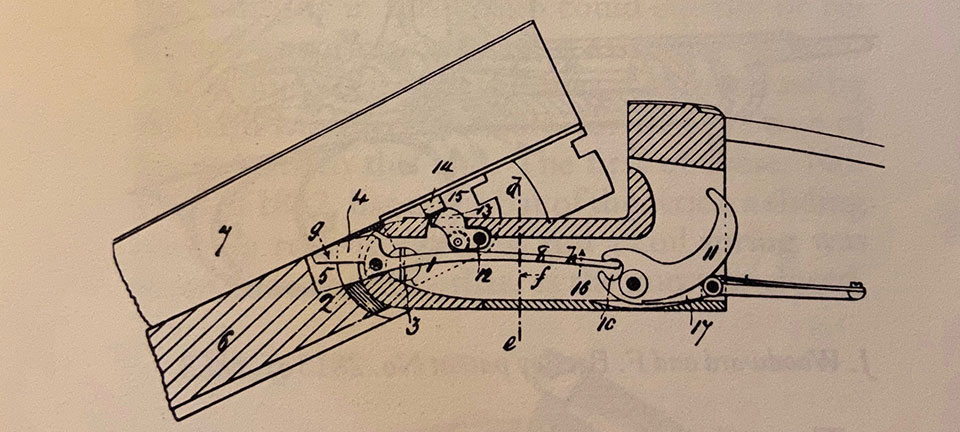
The challenge of ownership is that breakages will be very hard to repair, especially to broken mainsprings. If you can find one in good condition, working perfectly, it is likely to be reliable and pleasure to use.
Avoid well-worn, modified or re-worked guns; they suggest past meddling by people who may not have been sufficiently knowledgeable about the design to do the work correctly.
Henry Thorn may, or may not, have lived to see this gun sold. He died of influenza in 1914 at the age of fifty-nine. At the time, he was the serving Chairman of The Gunmakers’ Association.
He is buried in Wandsworth Cemetery in an unmarked grave.
Published by Vintage Guns Ltd on (modified )




